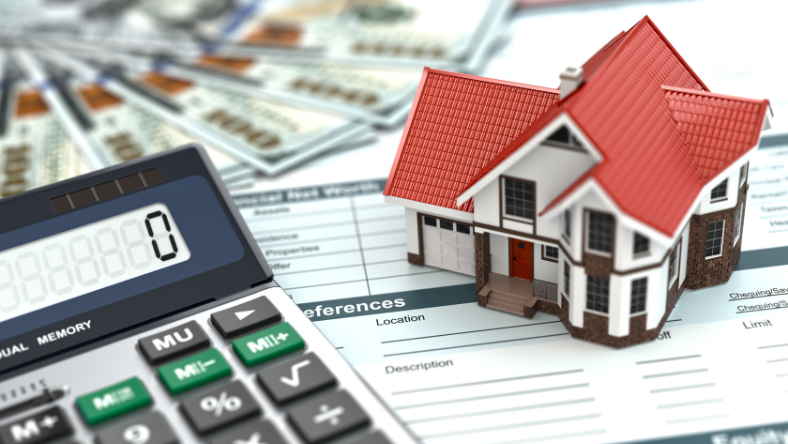
Mortgage rates have surged in recent years, making affordab...
You are about to leave SalemFive.com
You are leaving Salem Five's website and going to a third party site. That site may have a privacy policy different from Salem Five and may provide less security than this Salem Five site. Salem Five and its affiliates are not responsible for the products, services, security and content on the third party website. Do you wish to continue to the third party site?
Products and services in this section are being offered through LPL Financial or its affiliates
You are leaving the Salem Five Bank portion of this website and going to the Salem Five Investment Services portion which is separate from Salem Five Bank. These products and services are being offered through LPL or its affiliates, which are separate entities from and not affiliates of Salem Five Bank or Salem Five Wealth Advisors. Securities and insurance offered through LPL or its affiliates are: Not Insured by FDIC or Any Other Government Agency | Not Bank Guaranteed | Not Bank Deposits or Obligations | May Lose Value

Our secure browser is a convenient gateway to applications provided to our commercial clients. It offers the confidence of layered protection through secure site access, malware prevention and one-time passcodes delivered via text.
A TRUSTED PARTNER SINCE 1855. Helping people and businesses make their move.
Safeguarding your home, your auto, your family, and everything that matters most to you.
Stay Protected »Make sure you’re ready for life's changes. Our goal is to educate and empower you to make informed financial decisions.
Be Prepared »5.99% APR* valid for 6 months from closing; 7.00% APR* prime rate minus 1/2% for life of line. Rate may vary.
APPLY TODAY »WE'RE IN THE BUSINESS OF HELPING YOU. From starting to managing to growing a business, you'll thrive with FIVE.
Securing business insurance is crucial to safeguard companies from unforeseen risks and financial setbacks.
Get Protected »Build the financial future you want for your business. Tailored to you, your business and your needs.
Start Planning »When you join Salem Five, you have access to a unique business network all working together.
MEET THE TEAM »WE KNOW YOU NEED MORE THAN A BANK. We believe in becoming true partners with our business clients.
Commercial insurance helps businesses manage risks by providing coverage for property damage, liability claims, and employee-related incidents.
Insurance Solutions »Build the financial future you want for your business. Tailored to you, your business and your needs.
Start Planning »WE'RE HERE TO HELP AND READY TO LISTEN. Call our Support Center at (800) 850-5000 or email us.
Providing you with high-quality customer service for all your personal and business banking needs. Access your account online 24/7.
Contact Us »Q. What is Salem Five's routing number?
A. 211370558
Q. What is Salem Five's mailing address?
A. 210 Essex Street, Salem, MA 01970
Try out our helpful calculators for our Mortgage, Savings, Insurance, Retirement and Auto Loan products.
Find a Calculator »Our articles provide insights and tips for your financial journey.
Start Learning »Our secure browser is a convenient gateway to applications provided to our commercial clients. It offers the confidence of layered protection through secure site access, malware prevention and one-time passcodes delivered via text.
A RATE THAT IS SURE TO MOVE YOU. Limited time HELOC offer.
5.99% APR* valid for 6 months from closing; 7.00% APR* prime rate minus 1/2% for life of line. Rate may vary. APPLY TODAY »BUSINESS BANKING
When you join Salem Five, you have access to a unique business network all working together. MEET THE TEAM »
When you purchase a home with the help of a lender, the lender will likely set up an escrow account for you as well. The lender collects the money from you on a monthly basis for property taxes and homeowner's insurance, holds it in the escrow account, and then pays those bills on your behalf when they come due. For the lender, the main purpose of an escrow account is to protect their lienholder interest in your home. The borrower benefits by spreading out payments on a monthly basis for bills that are due semi-annually or annually.
Ready to set up an escrow account for your new home? Contact our lending specialists today to get started!
When establishing an escrow account, your lender will calculate the total annual payments for your property taxes and homeowner's insurance. The annual amount will then be divided by 12 to calculate your monthly escrow payment. This monthly amount is added to your principal and interest payment to make your total mortgage payment. You might hear your full monthly payment referred to by the acronym "PITI", for Principal, Interest, Taxes & Insurance. Lenders also typically require you to maintain a cushion of two months of escrow payments in the account at all times.
Every year, your lender will review your escrow account to ensure it has the right amount of funds. The lender will recalculate your payments based on the previous year's property tax and insurance costs. If there were a shortage or a deficiency within your account, your lender will spread the amount of your shortage and/or deficiency over the next 12 months which will result in an increased mortgage payment the following year. You also have the option of making a one-time payment for the shortage and/or deficiency amount. These amounts are detailed on your annual escrow analysis statement. **
If there was an overage in your account > $50, your lender will disburse these funds to you in the form of a check and if the amount is < $50, the lender will spread this amount as a credit over 12 months and possibly decreasing your escrow payment for next year.
**A one-time payment for your shortage/deficiency requires special handling. You may make your payment online, in-person or by mail, however, please email loanservicing@salemfive.com notifying us of your choice to make your shortage/deficiency payment, including your loan number and payment amount, so that your mortgage payment the following year can be adjusted in accordance with your escrow analysis statement. You may also reach out to our contact center at (800) 850-5000 for assistance.
Have questions about the interest rates on your escrow account? Schedule a free consultation with one of our experts to get all the answers!

Mortgage rates have surged in recent years, making affordab...

VA loans are issued by private lenders but guaranteed by th...

Jumbo loans, or jumbo mortgages, are designed for financing...

Owning a home carries several tax implications that you sho...

Choosing to buy a home is a straightforward decision, but n...